🎬 Introduction to Cobalt Blue movie
“Cobalt Blue movie” is one of the most talked-about Netflix releases in Indian cinema, adapted from Sachin Kundalkar’s celebrated novel of the same name. This film is a coming-of-age drama that dives deep into the themes of identity, sexuality, love, and the complexities of family relationships. Set in the 1990s, it follows the journey of two siblings who fall in love with the same paying guest, leading to life-altering consequences. What makes the movie special is not just its sensitive storytelling but also its ability to bring out raw emotions that resonate with modern audiences. With its layered narrative, poetic dialogues, and brilliant performances, “Cobalt Blue movie” stands out as a rare gem that portrays LGBTQ+ themes with honesty and depth.
The movie breaks away from conventional Bollywood norms and instead opts for a more realistic and art-house style of storytelling. Its beauty lies in the silence, the emotions behind unspoken words, and the depth of its characters. Viewers get a glimpse into not just the love triangle but also the internal struggles of individuals who dare to dream differently. In this introduction, we understand why this film has gained both critical acclaim and strong audience appreciation across digital platforms.
More than just a love story, “Cobalt Blue movie” is a bold statement on individuality and freedom. It urges viewers to reflect on their own journeys of acceptance, love, and identity. This makes it a must-watch for audiences who crave stories with substance and authenticity.
📖 Storyline of Cobalt Blue movie
The story of “Cobalt Blue movie” is centered on a Marathi family living in Kerala during the 1990s. The peaceful rhythm of their life changes when a mysterious paying guest enters their home. Both siblings, Tanay and Anuja, get drawn to him, but their love unfolds in contrasting ways. Tanay, the brother, finds himself deeply attracted to the paying guest and begins to explore his suppressed sexuality. Anuja, on the other hand, falls for him with the innocence of a young woman experiencing love for the first time. This dual love interest creates the central conflict of the film.
As the paying guest becomes an integral part of their lives, the family dynamics begin to shift. The narrative beautifully captures Tanay’s emotional turmoil and longing, expressed through heartfelt poetry and moments of silence. Anuja’s story reflects youthful dreams, vulnerability, and the heartbreak of betrayal. When the paying guest eventually leaves without a trace, both siblings are left devastated, but their journeys of self-discovery continue in very different directions.
The storyline is not just about romantic relationships but also about how individuals confront social restrictions, cultural taboos, and personal truths. By weaving together family, love, and self-realization, “Cobalt Blue movie” delivers a layered narrative that appeals to both the heart and the mind.
🎭 Performances in Cobalt Blue movie
The strength of “Cobalt Blue movie” lies in the power-packed performances of its cast. Prateik Babbar, who plays the enigmatic paying guest, gives a nuanced portrayal of charm, mystery, and vulnerability. His ability to express emotions through subtle gestures adds great depth to the character. Neelay Mehendale, playing Tanay, delivers a career-defining performance. His portrayal of a young man grappling with his sexuality and unspoken desires is both sensitive and compelling, making the audience empathize with his pain and courage.
Anjali Sivaraman, who plays Anuja, also stands out with her innocence and emotional intensity. She captures the confusion, heartbreak, and vulnerability of a young woman experiencing her first love. Together, the trio creates an unforgettable emotional triangle that drives the story forward. The supporting cast, including the parents and extended family, adds authenticity to the film by portraying the cultural context and generational values of the 1990s middle-class Indian family.
Overall, the performances elevate the narrative, ensuring that viewers remain emotionally invested throughout the film. The rawness and honesty in the acting are what make “Cobalt Blue movie” not just a cinematic experience but also an emotional journey.
🎥 Direction and Vision
“Cobalt Blue movie” is directed by Sachin Kundalkar, who also wrote the original novel. His dual role as author and filmmaker gives the film a unique authenticity. Kundalkar’s vision is deeply personal, as he translates his own words from page to screen with precision and emotion. His direction focuses not on melodrama but on subtle emotions, creating an art-house feel that stays true to the book’s essence. He uses silence, pauses, and carefully framed shots to convey feelings that words often cannot.
His handling of LGBTQ+ themes is sensitive and progressive, avoiding stereotypes and presenting a layered perspective. The decision to set the story in the 1990s adds to the emotional depth, as it was a time when conversations around sexuality were far less open. Kundalkar ensures that the audience not only watches the love triangle unfold but also reflects on broader themes of identity and self-acceptance. His direction makes “Cobalt Blue movie” a poetic and powerful cinematic experience.
With his strong storytelling vision, Sachin Kundalkar has created a film that bridges literature and cinema, making it an unforgettable adaptation.
🎶 Music and Soundtrack
Music plays an important role in “Cobalt Blue movie,” enhancing the emotions and atmosphere of the narrative. The background score is subtle, often using soft instrumentals to amplify the intensity of silent moments. Instead of overwhelming the scenes, the music complements the flow of emotions, whether it is longing, heartbreak, or quiet joy. Each note seems to resonate with the inner feelings of the characters, particularly Tanay’s journey of self-discovery and pain.
The songs in the film carry a poetic quality, aligning with the novel’s literary background. The lyrics are carefully written to echo the emotional state of the characters. They reflect longing, intimacy, and melancholy in ways that words alone cannot. The soundtrack adds layers to the narrative, ensuring that the audience connects with the mood of each scene on a deeper level.
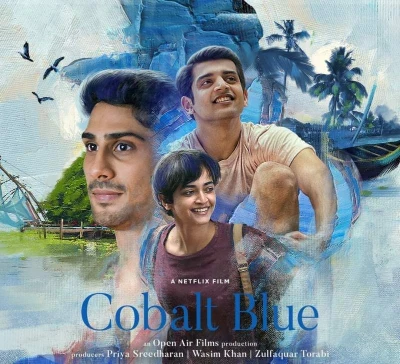
Overall, the music in “Cobalt Blue movie” does not aim for commercial appeal but rather supports the film’s artistic essence, making it memorable and impactful for viewers who appreciate subtlety in storytelling.
📸 Cinematography and Visual Appeal
One of the most striking aspects of “Cobalt Blue movie” is its stunning cinematography. The visuals capture the beauty of everyday life in Kerala while also reflecting the emotional states of the characters. The use of natural lighting, minimalistic interiors, and carefully chosen color palettes gives the film an intimate feel. The recurring shade of cobalt blue serves as a symbolic element, representing both longing and depth, tying together the narrative’s emotional themes.
The camera work often lingers on small details — a fleeting glance, an unfinished painting, or the silence of a character — adding depth to the storytelling. The visual language avoids extravagance and instead focuses on creating mood and symbolism. Every frame feels like a painting, designed to evoke thought and emotion. This careful use of cinematography ensures that the film is not just watched but also felt on a sensory level.
Through its strong visual storytelling, “Cobalt Blue movie” becomes more than just a cinematic adaptation — it transforms into an artistic expression of love, loss, and identity.
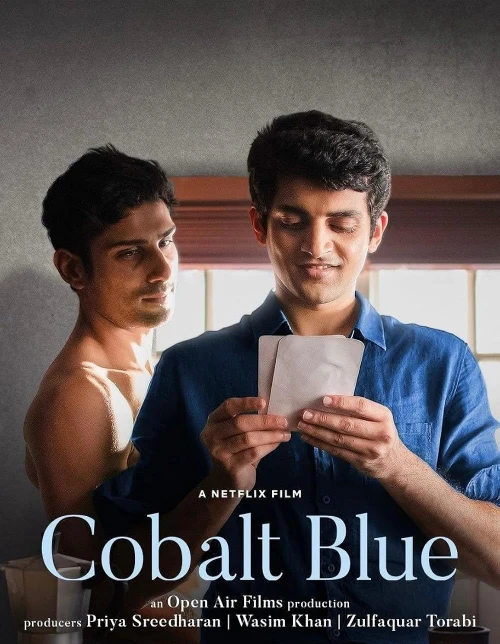
🎬 Introduction to Cobalt Blue movie
“Cobalt Blue ” is one of the most talked-about Netflix releases in Indian cinema, adapted from Sachin Kundalkar’s celebrated novel of the same name. This film is a coming-of-age drama that dives deep into the themes of identity, sexuality, love, and the complexities of family relationships. Set in the 1990s, it follows the journey of two siblings who fall in love with the same paying guest, leading to life-altering consequences. What makes the movie special is not just its sensitive storytelling but also its ability to bring out raw emotions that resonate with modern audiences. With its layered narrative, poetic dialogues, and brilliant performances, “Cobalt Blue movie” stands out as a rare gem that portrays LGBTQ+ themes with honesty and depth.
The movie breaks away from conventional Bollywood norms and instead opts for a more realistic and art-house style of storytelling. Its beauty lies in the silence, the emotions behind unspoken words, and the depth of its characters. Viewers get a glimpse into not just the love triangle but also the internal struggles of individuals who dare to dream differently. In this introduction, we understand why this film has gained both critical acclaim and strong audience appreciation across digital platforms.
More than just a love story, “Cobalt Blue movie” is a bold statement on individuality and freedom. It urges viewers to reflect on their own journeys of acceptance, love, and identity. This makes it a must-watch for audiences who crave stories with substance and authenticity.
📖 Storyline of Cobalt Blue movie
The story of “” is centered on a Marathi family living in Kerala during the 1990s. The peaceful rhythm of their life changes when a mysterious paying guest enters their home. Both siblings, Tanay and Anuja, get drawn to him, but their love unfolds in contrasting ways. Tanay, the brother, finds himself deeply attracted to the paying guest and begins to explore his suppressed sexuality. Anuja, on the other hand, falls for him with the innocence of a young woman experiencing love for the first time. This dual love interest creates the central conflict of the film.
As the paying guest becomes an integral part of their lives, the family dynamics begin to shift. The narrative beautifully captures Tanay’s emotional turmoil and longing, expressed through heartfelt poetry and moments of silence. Anuja’s story reflects youthful dreams, vulnerability, and the heartbreak of betrayal. When the paying guest eventually leaves without a trace, both siblings are left devastated, but their journeys of self-discovery continue in very different directions.
The storyline is not just about romantic relationships but also about how individuals confront social restrictions, cultural taboos, and personal truths. By weaving together family, love, and self-realization, “Cobalt Blue ” delivers a layered narrative that appeals to both the heart and the mind.
🎭 Performances in Cobalt Blue movie
The strength of “Cobalt Blue ” lies in the power-packed performances of its cast. Prateik Babbar, who plays the enigmatic paying guest, gives a nuanced portrayal of charm, mystery, and vulnerability. His ability to express emotions through subtle gestures adds great depth to the character. Neelay Mehendale, playing Tanay, delivers a career-defining performance. His portrayal of a young man grappling with his sexuality and unspoken desires is both sensitive and compelling, making the audience empathize with his pain and courage.
Anjali Sivaraman, who plays Anuja, also stands out with her innocence and emotional intensity. She captures the confusion, heartbreak, and vulnerability of a young woman experiencing her first love. Together, the trio creates an unforgettable emotional triangle that drives the story forward. The supporting cast, including the parents and extended family, adds authenticity to the film by portraying the cultural context and generational values of the 1990s middle-class Indian family.
Overall, the performances elevate the narrative, ensuring that viewers remain emotionally invested throughout the film. The rawness and honesty in the acting are what make “Cobalt Blue movie” not just a cinematic experience but also an emotional journey.
🎥 Direction and Vision
” movie” is directed by Sachin Kundalkar, who also wrote the original novel. His dual role as author and filmmaker gives the film a unique authenticity. Kundalkar’s vision is deeply personal, as he translates his own words from page to screen with precision and emotion. His direction focuses not on melodrama but on subtle emotions, creating an art-house feel that stays true to the book’s essence. He uses silence, pauses, and carefully framed shots to convey feelings that words often cannot.
His handling of LGBTQ+ themes is sensitive and progressive, avoiding stereotypes and presenting a layered perspective. The decision to set the story in the 1990s adds to the emotional depth, as it was a time when conversations around sexuality were far less open. Kundalkar ensures that the audience not only watches the love triangle unfold but also reflects on broader themes of identity and self-acceptance. His direction makes “Cobalt Blue movie” a poetic and powerful cinematic experience.
With his strong storytelling vision, Sachin Kundalkar has created a film that bridges literature and cinema, making it an unforgettable adaptation.
🎶 Music and Soundtrack
Music plays an important role in “Cobalt Blue ,” enhancing the emotions and atmosphere of the narrative. The background score is subtle, often using soft instrumentals to amplify the intensity of silent moments. Instead of overwhelming the scenes, the music complements the flow of emotions, whether it is longing, heartbreak, or quiet joy. Each note seems to resonate with the inner feelings of the characters, particularly Tanay’s journey of self-discovery and pain.
The songs in the film carry a poetic quality, aligning with the novel’s literary background. The lyrics are carefully written to echo the emotional state of the characters. They reflect longing, intimacy, and melancholy in ways that words alone cannot. The soundtrack adds layers to the narrative, ensuring that the audience connects with the mood of each scene on a deeper level.
Overall, the music in “Cobalt Blue movie” does not aim for commercial appeal but rather supports the film’s artistic essence, making it memorable and impactful for viewers who appreciate subtlety in storytelling.
📸 Cinematography and Visual Appeal
One of the most striking aspects of “Cobalt Blue movie” is its stunning cinematography. The visuals capture the beauty of everyday life in Kerala while also reflecting the emotional states of the characters. The use of natural lighting, minimalistic interiors, and carefully chosen color palettes gives the film an intimate feel. The recurring shade of cobalt blue serves as a symbolic element, representing both longing and depth, tying together the narrative’s emotional themes.
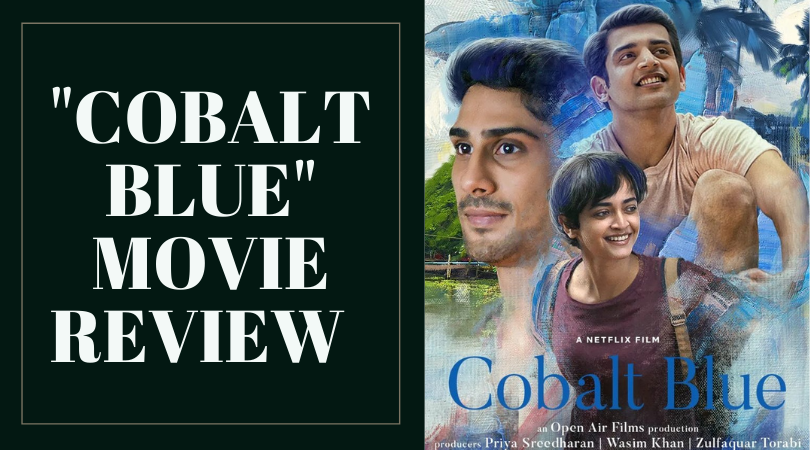
The camera work often lingers on small details — a fleeting glance, an unfinished painting, or the silence of a character — adding depth to the storytelling. The visual language avoids extravagance and instead focuses on creating mood and symbolism. Every frame feels like a painting, designed to evoke thought and emotion. This careful use of cinematography ensures that the film is not just watched but also felt on a sensory level.
Through its strong visual storytelling, “Cobalt Blue movie” becomes more than just a cinematic adaptation — it transforms into an artistic expression of love, loss, and identity.


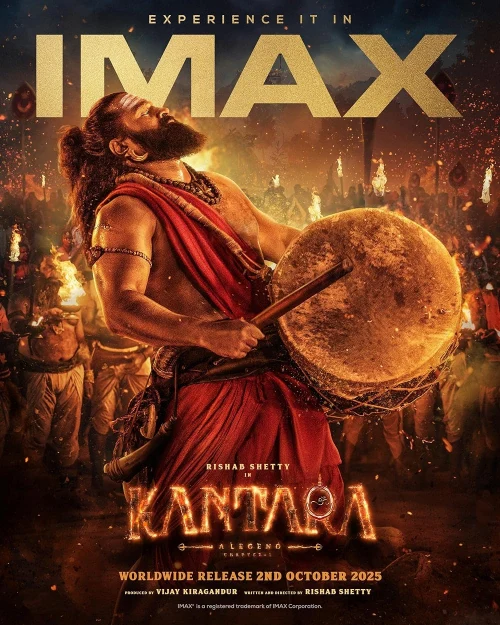
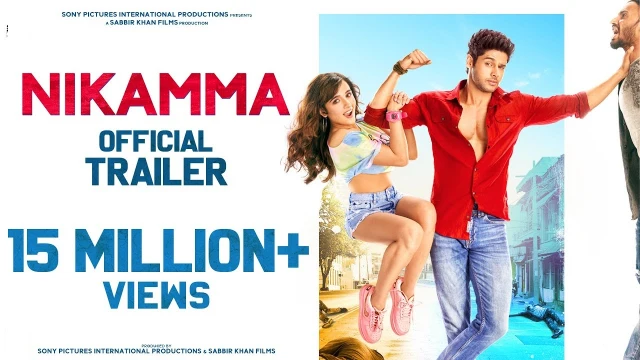
One thought on “Cobalt Blue Movie Review: Story, Cast, Themes.”